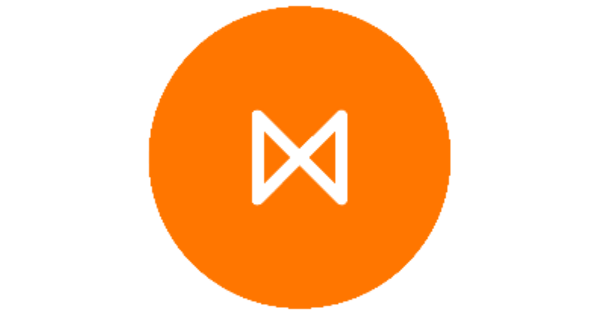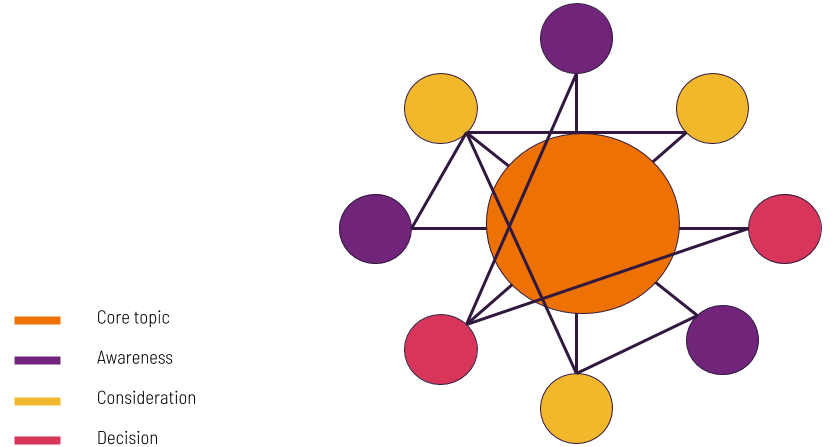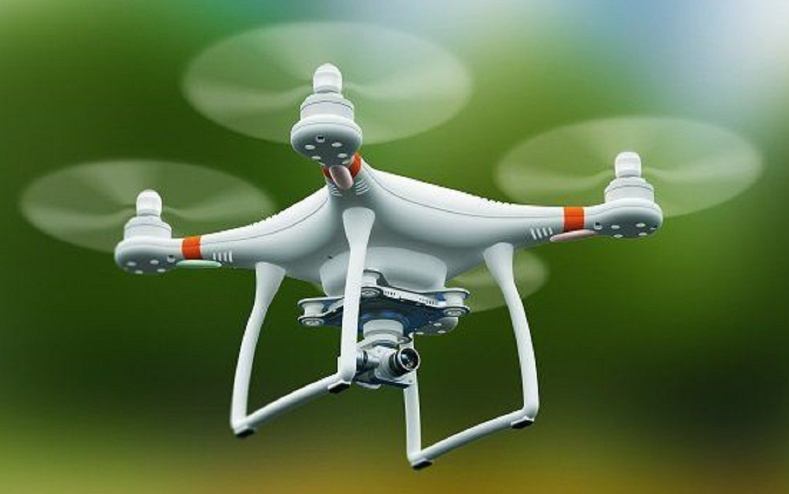Australia’s leading LinkedIn marketer Sally Illingworth joins the Forward Thinking podcast to share how she gained over 14 million organic content views on LinkedIn in less than 12 months.
We touch on how to create the perfect LinkedIn profile (I’ve got some work to do here), how to get leads that convert on LinkedIn and how publishing 1 video per day on LinkedIn can increase your profile views by 2000%
With over 55,000 pieces of content published on LinkedIn every second, Sally shares exactly how to produce content that cuts through the noise and delivers results for your business.
For any business owner who doesn’t know how to get started and begin leveraging the massive power of LinkedIn, this episode is a must-listen.
Table of Contents
ToggleWhat you will learn
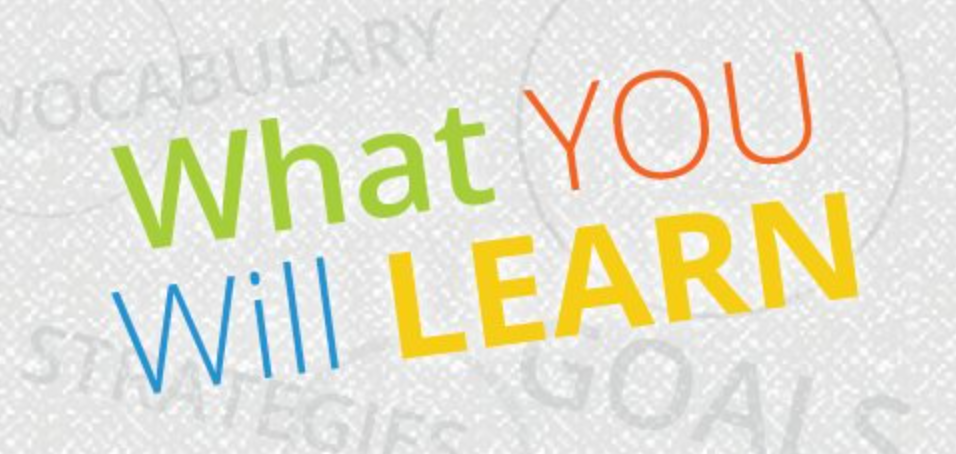
- How to start your content marketing strategy for your business
- How to maximize your content reach > lessons from gaining 14million organic content views on LinkedIn
- How publishing 1 video per day on LinkedIn can increase your profile views by 2000%
- How cooking Australia’s largest pizza resulted in priceless PR and engaging content
- Why LinkedIn is the best platform for personal branding
- How to create the perfect LinkedIn profile
- How to get leads that convert through LinkedIn
- Creating content assets that create emotional connections with prospects
- Type of content that the LinkedIn algorithm is rewarding the most
- How to maintain content production in your business
- How to produce 30 videos from 1 pillar article
Resources mentioned in this episode
Linkedin as a content publishing platform
LinkedIn influencers to check out:
Mark Metry
What business you would build on Mars?
Intergalactic video production business. And how do I market it to the Martians? I would market it by showing them what I’ve achieved with my LinkedIn profile because then they can use video content production to market to come and visit Mars.
Transcript
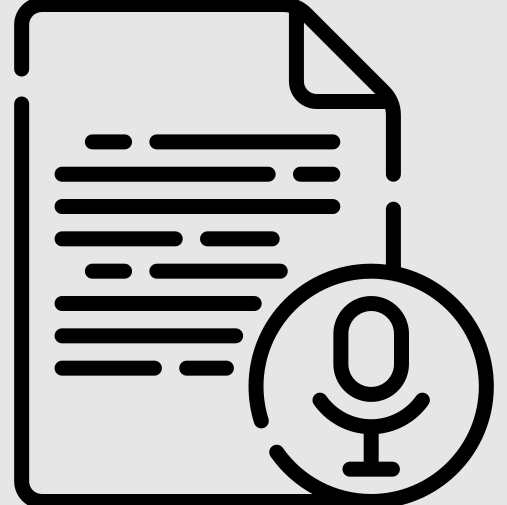
Brendan Can you tell us how you first got involved in the world of marketing?
Sally Interesting story. So I think I’ve always had an interest in marketing. My career started in the food retail industry. I did the sort of traditional stereotypical started working in a pizza shop when I was a teenager. And what ended up happening is that as my career grew and sort of accelerated in that industry, I was working within a franchise system, but I didn’t like sort of the constraints of marketing within franchising. So I really took ownership of the personal story behind everything that I was doing in my career. So I always started to tell my story from when I started working. And in that sense I was always marketing myself and my career progression.
Sally But then when I got, I suppose more into the marketing space, it came about around sort of 20 months ago. And I was sort of interested in the whole social media landscape, what was going on. And as what most people are, which is like a passive consumer of content, I was just trying to understand exactly what was going on. I was like, “How are people doing this and whatnot?” So I sort of went over to the LinkedIn platform, and I started producing video content with no specific commercial objective.
I just went straight in there, started producing it and started to see how not only the algorithms, but also the users and the consumers on the platform started to behave and respond. And I became very obsessed with trying to understand what makes people tick. Why will they respond to this piece of content in that way? Why won’t they respond to this one? What impact does copy have verse a video thumbnail? And so forth. So I sort of just like fell in love with that and became obsessed with trying to understand the behavior behind content marketing. And it sort of evolved from there.
Brendan Yeah. I definitely want to dive deeper on LinkedIn and content marketing, but I want to circle back to your pizza and franchising days for a second because there’s some interesting statistics that I read. You were the youngest franchisee at age 18, you had Australia’s furthermost domestic pizza delivery at 350 kilometers, and the record for Australia’s largest pizza, 11.4 meters. Can you please talk me through all of that?
Sally So the first one, yes. I started my career with pizza. And then yeah, my career just progressed and accelerated within that franchise brand. And then when they were ready to launch in the Northern Territory, so in Darwin, because I’d lived there when I was younger, they contacted me and said, “Do you want to take that next step? So leave corporate, whatever, become a franchisee, launch the brand up there?” So I did that and I was 18 years old. Yeah. So it’s quite different to what everyone else was doing. A lot of stress, you take on a lot of responsibility, a lot of financial pressure as well. But yeah, so I did that. And then in terms of the furthest pizza delivery, that came about because I ended up having a combination of our corporate contracts with the Crust brand whilst I was still a franchisee, and I had to do a business trip over to Perth. And my mum had sort of not long relocated back to regional Western Australia, which was 350 kilometers outside of Perth.
And she’s like, “Oh, Sal, I just miss your pizzas. I’d love to have a pizza.” And I’m all about capitalizing on a PR opportunity, whatever. So I was like, “Okay.” So I got some Crust franchisees over there to open up their shop when I arrived on a Saturday, got some pizzas cooked up, and then I recorded the journey of me delivering pizzas 350 kilometers. They weren’t that great by the time I got there.
And so that was that one. And then with the 11.4 meter, longest cooked pizza in Australia. That came about because I think I had only had the business open, my pizza business in Darwin, for about, oh, must’ve been three months or something. And the local radio station up there contacted me and they said, “Oh, we want someone to cook Australia’s longest pizza. Can you do it?” And I said, “Yeah, sure, no problem.” And they’re like, “Okay, we’ll do it on Friday.” And so I had three days to prepare. And the shop, the business wasn’t even 11 meters long, it was this small little compact square. And I was like, “Oh my God, we can’t even cook the pizza.”
So anyway, that was a logistical nightmare. And so I ended up getting my shop fitter to come in. We reconfigured the ovens, the conveyor belts to cook the other way, so we could cook it out of the business into the car parking lot. Yeah, so it was a pretty cool experience. We wanted to make a Guinness world record, but one, we couldn’t because I don’t think we were eligible. But two, because we didn’t have the right, I suppose auditing process on the day. But yeah, it was a pretty cool experience.
Brendan Who ate the pizza?
Sally Well, this is the thing, 200 locals came down and ate it. It took us a total of about three or four hours to make, because we made it, had the TV crew down there, all that sort of stuff, make it. But it took three minutes for 11.4 meters worth of pizza to just go.
Brendan Three minutes?
Sally Yeah, it was amazing
Brendan So it sounds like you’ve been on a content crusade for most of your working life now. So let’s move back to LinkedIn. So the listeners may not know, but we’re in the presence of royalty. You’re the LinkedIn majesty. Was that a title that was given to you? How did that come about?
Sally Yeah, so always people in the LinkedIn sphere, which from a content perspective is actually still very much in its infancy. It’s very immature as a content platform. Because traditionally LinkedIn wasn’t a content haven. It’s probably really in the last 12 months that it’s come to life and you’re seeing more content on there and people actually go into the LinkedIn platform to source content from independent contributors. But yeah, how that all came about is I suppose, particularly being, I suppose one of the earlier people to really leverage LinkedIn video, especially in Australia. People always going like, “Oh, you’re the content queen, the LinkedIn queen,” and so forth. And then a friend of mine actually threw the word, instead of coined, they’re just like, “Yeah, LinkedIn majesty. That’s you.”
So as a joke almost, I sort of really own that, but it’s something that’s actually stuck with a lot of people, right? So it’s kind of cool. It’s a little bit sort of… What’s the word? It sort of blows your head up a little bit every now and then, but it’s more of a laugh than anything.
Brendan I think you back it up though with the numbers. So you’ve got over 14 million organic content views in the last year. And an average engagement rate of 2.76%. so there’s some queen worthy numbers right there.
Sally Yeah, I know. And it’s been a long journey to get there and a massive learning experience. But what’s come from that is a massive opportunity to help other people do the same thing. And unlock the potential, I suppose of organic content reach on the LinkedIn platform. Because unlike things like Facebook, which have become very sort of commercialized and whatnot, everyone knows you’ve got to pay to reach all of your followers now, LinkedIn’s still, like I said, in its infancy. So whether you are a small business, or you’re an entrepreneur, whatever the case may be, from an organic content reach perspective, LinkedIn’s very opportunistic in that sense.
Sally And so by building those numbers myself, it positions me really well to show people this is how I do it and this is the exact strategy I put in place. These are all the mistakes I made, so don’t do that. And let’s fast track the growth for you.
Brendan Yeah. No, it’s great that you’ve actually done it and you’ve got all the battle scars, you’ve got all the lessons, so for early stage businesses listening today where do they start?
Sally I think the biggest thing is if you think about content, particularly on social media, and think about yourself as a consumer of content. What do you do when you traditionally go into social media platforms? You sort of just scroll passively. And if you’re not yet creating content, typically you’ll look at the content. And if you’re thinking about starting content, it feels overwhelming because generally speaking, you look at someone else’s content, it feels polished, it feels great and it feels so out of reach for you to do yourself. So what I usually tell people to start with is, particularly if you’re small business owner, or maybe you’re just starting a business, is audit your expertise and or your interests.
So just get really clear on go, “Well, what do I already have in my possession? What do I know? What am I good at? And if I was to start marketing myself through content, what am I trying to achieve? And how does that directly tie back to my business?” So I have a framework where I always talk people through audit your expertise, and then from each area of expertise you have different key messages that you can deliver through different content assets to your target audience, and it’s as simple as that. And you get started with your mobile phone can do some pretty cool things. So it’s really cost effective and easy to start if you just break it down like that.
Brendan Yeah. And what about the actual profile? Because a lot of people struggle even with creating their LinkedIn profile. Do you have any tips around that?
Sally Yeah, so I think the three biggest things I always tell people with their LinkedIn profile, the three most important pieces of information on there, your profile photo, your headline on LinkedIn and your name. And the reason I say that is because, and I’m always tracking the data to show this to people, LinkedIn’s profiles I suppose from a configuration perspective, there are a lot of things you can fill on there, your experiences, your skills, so forth. But the biggest way you’re going to be discovered on the LinkedIn platform is through the newsfeed, by either producing your own content or engaging with someone else’s.
And particularly from a growth perspective, most of your growth is going to come by being discovered through the newsfeed, not through search appearances. And even in the case with search appearances, the same thinking applies because when someone comes across your profile in majority of the cases, all they see to start with is your profile photo, your name and your headline, right? So if you think about it with like a click bait mentality, you need to really optimize those three key pieces of information, and obviously one’s a visual asset, to try and increase the chances of people actually clicking through to even look at your profile, which is a very strong and powerful touch point for people. It’s sort of like a website. So I usually tell people they’re the three things they need to optimize first. Their name, it sounds quite basic, I’ll just put my name there.
But there’s a lot of confusion like, oh, do I include nicknames? Do I include emojis and so forth? Oh, I was trying to tell people like, just keep it basic because you want it to be clean so people remember it. I usually tell people as well to put the first initial of their middle name, if they’ve got one there as well to differentiate themselves, in case someone’s got the exact same first and last name as them. Like an Amy Smith, right? Like how many Amy Smiths are there? And then with they headline, by default on LinkedIn your headline will be your current job title that you set up in your experiences section, so I always tell people to personalize that. If you’re a small business owner, if you’re a CEO, if you’re a business development manager, a sales person, whatever the case may be, how many people have that job title?
So personalize it and make it enticing. And then with your profile photo, I always say the three biggest things that should emit are trust, comfort and personality. You want it to be inviting. I don’t know if you’ve seen on LinkedIn, people have photos sometimes that looks like they’re just about to go into prison. And you look at it and you’re just like, “This is really off putting as a viewer.” You want it to entice the viewer and make them feel welcome and comfortable to come through to your profile.
Brendan Where do you draw the line though? Because some people have, for example, their Facebook photo or they’re going to a concert sort of photo, or the beach.
Sally Yeah. Well obviously being a professional platform if you like, you want it to represent you at your best, right? I mean if you’re in the fitness game there’s no harm in having a photo on there of you in your fitness gear. It’s highly contextual to you and your business. But I always say try and get as close to your face as possible because it’s only, when you look at it on the platform, it’s really small. So people want to see your eyes and so forth, so try and avoid having your sunglasses on. Have it close up and no group photos, no I’m out drinking photos and you can tell. So yeah, be a little bit… I suppose do yourself a favor and make sure that it’s representing you at your best relative to the platform.
Brendan And then in terms of attracting business opportunities through your profile. So we’ve gone through your three steps. We have a nice profile photo, we have the headline filled out, we have our name, how do we get business opportunities?
Sally Yeah. So traditionally on LinkedIn, particularly before it became a massive content haven, most of LinkedIn from a business growth perspective, all of the strategies are focused on outreach. You send your sponsored in mails and so forth. But what you’re seeing more and more, and this isn’t exclusive to LinkedIn, is that prospects, they want to connect with people, they want to connect with the people behind the profiles. So everything I focused on with my own profile, and now that I help other people with, is creating content assets to build brand on LinkedIn. Emotionally connect with people and just increase general exposure as well as the likelihood of them actually getting inbound, I suppose traffic. So it doesn’t all have to be outbound, right? And through the process of doing that and creating those content assets, you actually allow a lot of prospects. So for small businesses for example, the prospects may be just leads. They’ve got a product and or service to sell. But people in the startup landscape.
Maybe they’re trying to attract investors, that’s a prospect for you. You want to get in front of investors. So by creating those content assets, you actually allow the community to almost warm themselves and qualify themselves before they contact you. Because through content they can understand who you are, what you’re all about, what you offer. So from that perspective, I mean the cost to produce content seamlessly, I mean it doesn’t cost that much, if at all anything other than time, you can do a lot from your mobile phone. So from a business perspective, it’s actually a really smart cost effective strategy. And the reason I say content, in terms of attracting the opportunities is because all of, for example with my profile and many other people’s profiles is most of the growth comes through exposure from content, and being discovered in the newsfeed, not search results, which means you need to be contributing to the platform to achieve massive growth and really attract those opportunities, and not passively exist on the platform, if that makes sense.
So like all of my, whether it’s profile views, all the metrics you can look at, profile views, follow account, in mails and so forth, at least 70% of that comes from the fact that I’m producing content. So that’s where the opportunity really sits.
Brendan And speaking of content, there’s over 55,000 pieces of content published on LinkedIn every second. So how do we create, I guess, captivating and engaging pieces of content?
Sally Yeah. So with that, so they’re 50,000 pieces of content every minute. Yeah, so that includes shared content as well. So most people on LinkedIn share content, but they share someone else’s post, whether it’s video or an article. And what happens when you share the content, which is what most people are doing, is it rewards the original publisher, not you sharing the content. So how to stand out in that consistently is certainly key, but you need to be consistently present in the feed because as with other platforms, momentum’s really important.
So one really good way to understand how you’re building momentum and how you’re maintaining it on LinkedIn, when you’re producing content that is, is to monitor something, the profile view metrics. Because what you’ll notice is that when you get started and start contributing, your profile views will start to go up because you’re contributing, you’re being discovered. And as you keep contributing, that’ll keep going up. But as soon as you stop and you’re no longer consistent with contributing on the platform, your profile views will go down. So it’s a really good way to get a quick glimpse as to whether or not you’re building that momentum or not through consistency. The other thing is certainly focus on video and downloadable PDFs, which have sort of recently been launched by LinkedIn. So you can upload PDF documents that people can download. So they’re probably the two hottest types of content on LinkedIn at the moment, that the algorithms are really favoring.
What you will notice though is that your content engagement rate, which is likes, plus comments, plus shares, as a percentage of total views, is a lot higher for videos and lower for downloadable PDFs. But the reach, the organic reach for PDFs proportionately is a lot higher. So there’s two really creative ways and very different ways. Like if you video… Everyone knows the future, or the now really, is video, video and audio. And if you don’t want to get on video, use things like downloadable PDFs because the algorithm, if you play to the algorithms ego, give it the top of content at once as well as there’s a lot of value in the content, then that’s how you really stand out, and consistently put content out.
Brendan Yeah. Awesome. Do you have any stories of people that you’ve worked with before and after? They’ve started off, pretty average LinkedIn profile, they’ve taken your advice and now they’re crushing LinkedIn?
Sally Yeah, so there was one person I worked with in particular and they’ve sort of dropped the ball now because that’s the other thing, right? Particularly from a personal branding perspective, I work with a lot of people from a personal branding perspective and a lot of people don’t have the stamina to keep it up. That’s the hard thing, which plays on the consistency piece because if you don’t have the stamina to keep up, then you can’t expect the results to keep coming. And I worked with them, we set their profile up from scratch. They weren’t even on LinkedIn. And then all we started releasing was one video per day, and the stats were incredible. Like you see for example, their profile views go from zero to increase by 2000% progressively. It’s amazing what happens. And then in terms of inbound connection requests and so forth.
Fortunately this person wasn’t looking for a job or anything like that, but that was a really unique case in the sense that they started from literally zero. They weren’t even on the platform before. So that was one of the best case studies I’ve ever had with working with someone because most people are already on there, and they just simply need to level their game really. They’ve already got the profile, they just need to fix it up. And that was the best case study I’ve ever had working with someone because it was literally from zero to hero. And you’re seeing people do it left front and center like it’s happening every day. There’s someone new coming out where they’re being discovered as this new sensation on LinkedIn. But what people don’t appreciate is all the work that’s gone in behind closed doors to build that momentum and so forth. But if you do it right, you have your profile set up and you start producing content, you really see the results.
Brendan And you touched on stamina as well. So it’s obviously hard to keep these kind of production level up. Do you have any stories or tips around how we can do this?
Sally Yes, so particularly for small businesses, the biggest thing is when you’re busy running a business it’s just another task you’ve got to do. And particularly if you don’t have in-house social media people, you don’t need that. If you plan it out… So I look at basic things like scheduling, and it’s not necessarily using a scheduling tool to deploy the content, but scheduling in your calendar, for example, we need to produce X, Y, Z pieces of content and then put them out. Because especially for a lot of small business owners and entrepreneurs that I work with, the problem is they will start, but then they don’t follow through. Then they feel discouraged by the whole process, and then they’re like, “Oh, it just doesn’t work.” Or, “I don’t have the time or the energy.”
And this is more of a mindset thing than anything, is if you block out 30 minute chunks in your calendar to produce content, or it might be two hours a week to produce content for the next two weeks, it doesn’t take that long. And then you schedule when that content needs to go out, you have everything prepared, you’ve written all your copy and so forth. It allows you to just hold yourself to account and not feel overwhelmed by the process of doing it. Because particularly for a lot of small businesses, traditionally it’s such a new area, and there’s a lot of overwhelm for people there. So I think the best place to start is just trying to eliminate that overwhelm and not over-complicate what it actually is that you’re doing.
Brendan And what about tools? Are there any fantastic tools that you’ve come across that you use every day in social media?
Sally Not necessarily. There’s a few apps I like. The biggest challenge I’ve actually had is finding a automatic subtitles or closed captioning app for myself because often I talk too quick. That’s for myself personally. But in terms of social media management, I’m a big fan of HubSpot. I also love Mailchimp as well from a CRM perspective. In terms of free video apps that you can use, particularly for small business owners or entrepreneurs who are just getting started and they’ve got close to zero budget, there is a really good video app called InShot that you can use. And you can put logos on it and all that sort of stuff. So that’s a really cost effective way for people to get started. So yeah, that’s sort of my tips on apps and stuff. I’m quite creative though. I’m always trying different things. Trying to find the next best thing.
I was actually speaking to a company the other day, and I may start using their services, and they have AI, it’s like AI automated like video editing. So you upload the video content and somehow the AI does some sort of editing thing and adjusts everything. So that’s sort of the next thing I’m looking at to really, I suppose get on the front foot with content production. And then if I like it, I will start recommending it to clients.
Brendan Yeah. Awesome. And what’s one thing that you wish you were more of an expert in in marketing at the moment?
Sally Interesting question. Actually probably on the topic of AI, and I know this is probably of interest to you with what you do, but the reason I say AI is because recently actually I collaborated with a friend, associate, that I’ve done some work with on a white paper, which was totally out of my league. Which was about 5G AI enabled automation. And my only contribution was writing all the definitions for everything that was going to be discussed. And in the process of doing that, it was a very sort of far-fetched learning experience for me to actually produce that content to contribute to the white paper. But what I realized is that a lot of the things that I suppose impact our day to day interactions with technology we already used, a lot of it is based around AI and so forth.
Things like recommender systems and stuff like that. And then as I was doing this research for this paper, I realized, okay, well a lot of these things are already being used in tech based things that I interact with as a consumer. And it really fascinated me because I’m like, well, how is this going to impact the future of marketing, for example? Particularly when it comes to content creation. And there’s already a large range of services and products out there that are impacting that. So in that sense, I wish I knew right now more about what the future of that looks like, particularly when it comes to content marketing.
Sally I think that’ll be a massive game changer. Like for example, this company I’m speaking to and they have this AI automated editing software. Things like that are… That’s really going to drive the future of marketing and make things like content marketing, which is becoming more and more important for people, particularly when you think about trying to produce content, both quality but also at scale, which is hard for a lot of people. So yeah, AI when it comes to content, I think.
Brendan Yeah, a very exciting area. And are you a big reader, Sally?
Sally I was a while ago, but then in recent times I haven’t prioritized it as much. I actually, interestingly enough, I do a lot of video, for example with my own personal brand of business, but I actually prefer to read and write.
Brendan Take us through your video process. I’m interested, I’m sure a lot of other people are interested, it’s a new area, especially on LinkedIn. What does the process look like from beginning to end?
Sally So usually, from a business perspective, there’s the expertise element. What do I know that speaks to what I can help other people, businesses, individuals with? But then from I suppose more of a just a macro, personal branding perspective there’s also the interest component. So it’s either an element of my expertise or my interest, and so what I’ll start with is sort of the top line. Okay, well what is my expertise? Is it LinkedIn video content creation? Is it copywriting? So forth. Or if it’s an interest, it might be okay, I’m interested in mindset and entrepreneurship.
So I always start at that level and then I just broke it down to really micro perspective and go, “Okay, well what’s a key message I can put into a piece of content that someone will take away?” And usually through video. So it might be, for example, okay I’m interested in how people overcome challenges. Okay, what’s a key message I want people to take away? What’s one thing? So it’s just a matter of breaking it down because I think, like I said earlier, when we look at content, it’s really easy to over-complicate it. But when you just stop by looking at what you’re interested in, what you know, that’s where the magic really comes out. And not trying to jam everything into a video.
Sally So, for example, in my articles, I will write a long form article that from a video perspective has like 30 videos in it. So you can condense it all into one article when it’s written because you wouldn’t just produce, for example, blog posts, articles with one paragraph. So if for example, your preference is to write, write out articles, write out blog posts, and then you’ll find that you could produce 30 different videos from one article because you just take out the key messages and put those into micro pieces of video content. So that’s usually how I go about it is try and take big topics, big thinking and just digestible pieces of content.
Brendan Yeah. And that’s a strategy that we’re using here at Metigy as well, getting that pillar piece of content, like this podcast, for example. And as you guys know, we get the podcast transcribed as well, so we have the full transcription underneath. And then we might make three or four micro pieces of content out of that. So, I mean the average sort of 30 minute podcast, 30 to 40 minute podcast, that gets us somewhere in between five and 7,000. So we definitely have a lot of material to play with.
Sally Yep. And that’s the beauty of it.
Brendan Yeah. So who are some LinkedIn content marketing influences that we should be following, so we can check out what’s working now in 2019? Besides yourself, and we’ll have your details in the-
Sally I’m a fan of so many people on there. There’s some people that are really changing the way LinkedIn video’s done. Definitely one would be a girl named Shay Rowbottom, so she’s over in the US. And the reason I think she’s so fascinating at the moment is because on a platform like LinkedIn, which is traditionally highly professional and whatnot, she’s taking this very interesting concept that you would expect to see on something like YouTube. Where it’s highly entertaining and not very business orientated, but yet there’s still a lot of business or personal development value in her content. So Shay Rowbottom.
And then another one I would say, which is interesting we’re talking about this on a podcast, is a guy named Mark Metry, who’s also in the US. And he’s certainly not a big video guy in the sense that he’s overly comfortable with it, but he’s focusing a lot on building his podcast. And he’s using LinkedIn, LinkedIn video, LinkedIn PDFs and so forth, in a very interesting way to build his podcast and get some pretty amazing guests on there, like Seth Godin and stuff like that. And he’s just going from strength to strength. So they both come from very different perspectives, and I think they’re both very good examples in very different professions, and they’re just finding a really creative way in their own niche, in their own market, to use LinkedIn content to grow their business and grow their presence.
Brendan No, I’m definitely going to check him out and swipe some of these podcast building secrets. Sounds fantastic.
Sally Yeah, go for it.
Brendan So we’ll put all those Sally’s resources in the podcast show notes, that you guys can find at metigy.com/podcast. And I’m very excited now, Sally, you’ve made it through to the abstract questions section of the podcast. This is where we get to ask some of them are just interesting questions, and I feel like you’re going to have some fantastic responses.
Sally This is going to be fun.
Brendan First question is, if you could have a billboard that all business owners could see, it could have text, visuals, video, whatever you want, where would you put it and what would it say?
Sally Wow, that is such a big question and that is very abstract. A billboard and where would I put it? This is probably going to sound bizarre, but I think I’d put the billboard… Oh, you can only have one billboard, you can’t put it everywhere. I was going to say it would have to go in everyone’s bathroom. And the reason I say that is because I think there’s probably, from a marketing perspective especially, which is what a billboard speaks to, is people’s bathrooms, they’re private, but there’s a lot of under-capitalized attention there.
What I would have on it, that’s a really interesting question. Hmm, I would probably have… That’s really hard.
Brendan So if you could give your 18 year old self, you’re back at the pizza shop in the Northern Territory, one piece of advice, what would it be?
Sally That don’t over catastrophize things in any given moment. Because I think particularly being 18 opening a business, it’s a lot of pressure, and at the time things always feel worse than they actually are. And anyone who owns a business, started a business would know, yourself in the startup landscape, a lot of stamina involved, it takes a lot of time, there’s a lot of endurance that’s needed there. So yeah, don’t overthink things and don’t over catastrophize anything that happens, good or bad.
Brendan So why did you start the business when you were 18?
Sally I think it was just sort of the next sort of evolutionary step in my career if you like at the time. And I get bored very easy as well. So once I sort of become quite competent at something, whether it’s in a certain position, or doing a certain task, or whatever, I have to move on to the next thing and I have to learn something else.
Brendan Right. Next abstract question, what algorithm do you identify with the most? And I think this is going to be an easy one for you.
Sally What algorithm?
Brendan Could be the LinkedIn algorithm, the Amazon algorithm, Spotify.
Sally Yeah. Identify with LinkedIn algorithm definitely. I was going to say, which one am I most fascinated in? Probably Facebook. Because anytime I go into any website, and within seconds they know I’m on there and they’re remarketing to me on Facebook, and it amazes me every single time.
Brendan Touching back on the LinkedIn algorithm, I know we talked about it briefly earlier. What other things have you found out about it in the last even three to six months? I mean it’s changing all the time.
Sally Yeah. Yeah. And it’s very difficult to pick what’s going on with it. I think they’ve definitely pulled back on the amount of organic reach they had when I got started with LinkedIn, about 20 months ago. It’s still very strong. Don’t get me wrong, still very, very strong, but they’ve certainly pulled back on it. And I think, yeah, probably the biggest thing I’ve come to realize, and this is where volume of content, especially if you want massive growth, is really important, is that after about 24 hours, the algorithm doesn’t really care about the of content anymore. So you just need to get on with it and move on because sort of what happens is, particularly if you put out a piece of content and it goes viral relative to the environment it’s in or to your profile positioning and so forth, it can be easy to hang onto that, but still after 24 hours, the momentum always drops off. So just keep going, don’t live in the past.
And the other thing is always treat every single piece of content in isolation. Don’t think that everyone’s seen the video before this, so in terms of running series and stuff like that, you’ve got to treat each asset as its own.
Brendan Right. That’s some solid advice. And the final question, Sally, are you ready for launch? Because you’re on the first flight to Mars, with Elon Musk, you’re the first settlers aboard the SpaceX Starship rocket. What business do you start when you land on Mars, and how would you market it to the new Martians?
Sally I’d probably start, interestingly enough, a video production business. And how do I market it to the Martians? I would market it by probably showing them what I’ve achieved with my LinkedIn profile because then they can use video, video content production, to market to people not on Mars to come to Mars.
Brendan Yeah. Good tourism campaign. I thought you were going to say some kind of pizza related asset. Mars’ biggest pizza.
Sally I do love pizza though.
Brendan Favorite type of pizza?
Sally Interestingly enough, it’s sort of my own. So cheese on the base, tomato and garlic base, with that Spanish chorizo. And then some sort of spicy peri-peri sauce on there is quite good, I love it. And buffalo mozzarella is always nice on a pizza.
Brendan That does sound delicious. All of Sally’s resources and pizza recipes can be found in the show notes at metigy.com/podcasts. And Sally, thank you so much for coming in and all the value you’ve dropped to the audience today.
Sally Thank you for having me.
Brendan No problem. Is there anything that you’d like to say before we depart? And how can people get in touch?
Sally Best place to get in touch is either other sallyillingworth.com, or catch me in the comments on LinkedIn usually.
Brendan Awesome. Thanks for coming in again.
